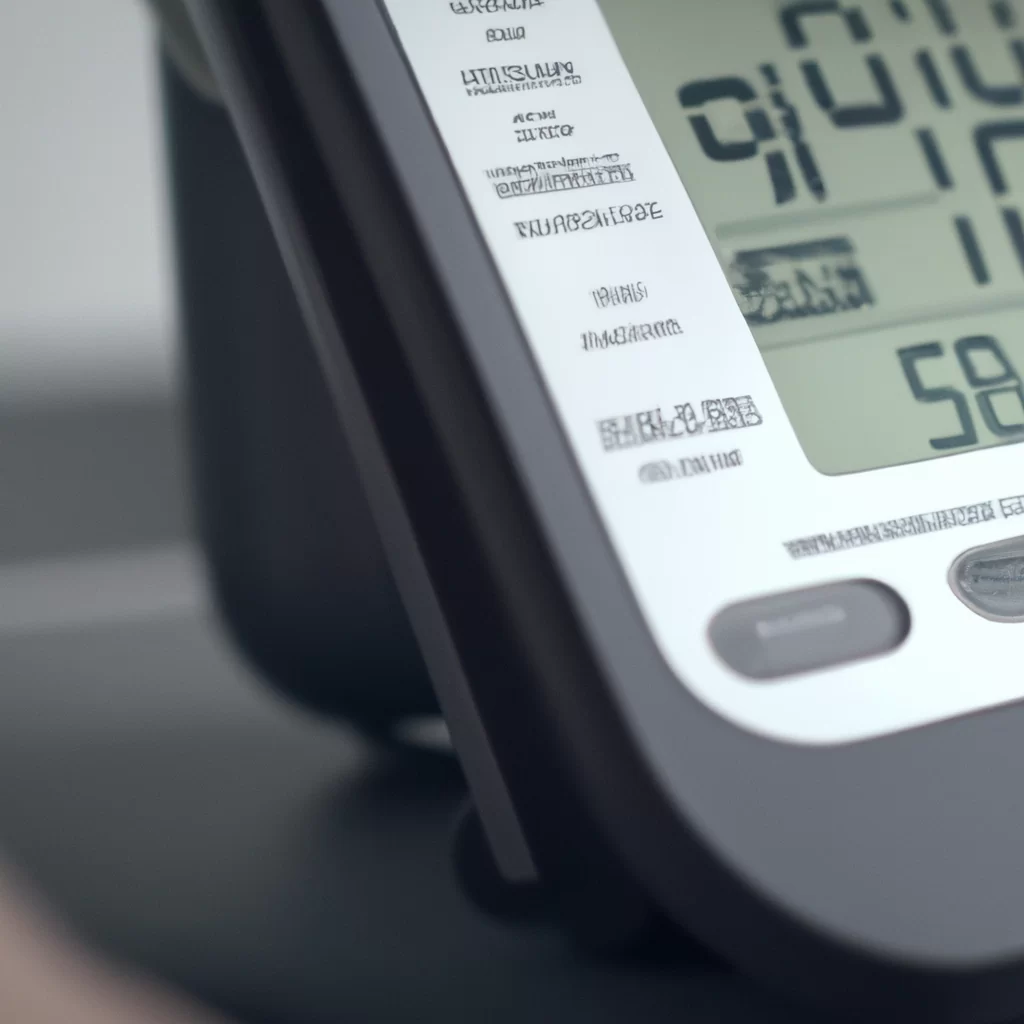How does a blood pressure monitor work?


How does a blood pressure monitor work?
Blood pressure is an important indicator of our overall health. A blood pressure monitor is a device used to measure the pressure of blood flowing through the arteries as it moves away from the heart. This device is commonly used in medical settings and is also available for home use. In this article, we will explore how a blood pressure monitor works and the different types of blood pressure monitors available in the market.
How it Works
A blood pressure monitor consists of a cuff, a pressure gauge, and a pump. The cuff is wrapped around the upper arm and inflated with air by the pump. The pressure gauge measures the pressure of the blood as it flows through the arteries, and the results are displayed on the monitor.
Blood Pressure Reading
The reading of a blood pressure monitor is displayed in two numbers: systolic and diastolic pressure. The systolic pressure is the pressure when the heart contracts, while the diastolic pressure is the pressure when the heart relaxes between beats. Blood pressure is measured in millimeters of mercury (mm Hg). For example, a healthy blood pressure reading is 120/80 mm Hg, where 120 is the systolic pressure, and 80 is the diastolic pressure.
Accurate Readings
Accurate blood pressure measurements are essential for effective hypertension management. Hypertension is a condition characterized by high blood pressure that can lead to serious health problems such as heart attacks, strokes, and kidney disease. Blood pressure monitors must provide accurate readings to detect hypertension and monitor its progression.
Sphygmomanometer
The sphygmomanometer is the traditional type of blood pressure monitor commonly used in medical settings. It consists of a cuff, a pressure gauge, and a stethoscope. The cuff is wrapped around the upper arm and inflated with air by the pump. The healthcare provider then listens to the blood flow with the stethoscope while slowly releasing the pressure in the cuff. The point where the healthcare provider first detects the blood flow is the systolic pressure, and the point where the sound disappears is the diastolic pressure.
Digital Blood Pressure Monitor
Digital blood pressure monitors are the most common type of blood pressure monitor available for home use. They are easy to use and provide accurate readings. Digital blood pressure monitors use oscillometric technology to measure blood pressure. The cuff is wrapped around the upper arm and inflated with air by the pump. The monitor then uses sensors to detect the oscillations in the arteries as the pressure in the cuff is released. The monitor then calculates the systolic and diastolic pressure and displays the results on the screen.
Blood Pressure Measurement
To obtain an accurate blood pressure measurement, the cuff must be the correct size for the arm. If the cuff is too small, the reading will be too high, and if the cuff is too large, the reading will be too low. The arm must also be at heart level, and the person should be seated and relaxed for at least five minutes before the measurement is taken. Blood pressure should be measured at the same time every day for consistency.
Cuff Inflation
Inflating the cuff to the correct pressure is essential for accurate blood pressure measurement. The cuff should be inflated to a pressure that is 20-30 mm Hg higher than the expected systolic pressure. This pressure is released slowly, and the measurement is taken when the pressure in the cuff reaches the systolic pressure. Inaccurate cuff inflation can result in inaccurate readings.
Conclusion
Blood pressure monitors are essential devices for monitoring blood pressure and detecting hypertension. The accuracy of the measurement is critical for effective hypertension management. The different types of blood pressure monitors available in the market offer various features, but digital blood pressure monitors are the most common type used for home use. Blood pressure should be measured at the same time every day, and the cuff must be the correct size and inflated to the correct pressure for accurate readings. By following these guidelines, blood pressure can be effectively monitored and managed.
Recent Posts
How do I create an engaging and informative online quiz or assessment?
Creating an engaging and informative online quiz or assessment can be a powerful tool for… Read More
What are the most effective methods for managing and reducing work-related stress in the hospitality industry?
Work-related stress is a common issue in the hospitality industry, where employees often face long… Read More
How can I improve my assertiveness and communication skills in a leadership position?
In a leadership position, assertiveness and effective communication skills are crucial for success. Being able… Read More
What are the key elements of a successful employee recognition and rewards program?
Employee recognition and rewards programs play a crucial role in motivating and engaging employees, as… Read More
How do I effectively manage and respond to customer feedback and reviews?
Customer feedback and online reviews play a crucial role in shaping a company's reputation and… Read More
What are the best strategies for effective time management as a stay-at-home parent?
Effective time management is crucial for stay-at-home parents who juggle multiple responsibilities on a daily… Read More